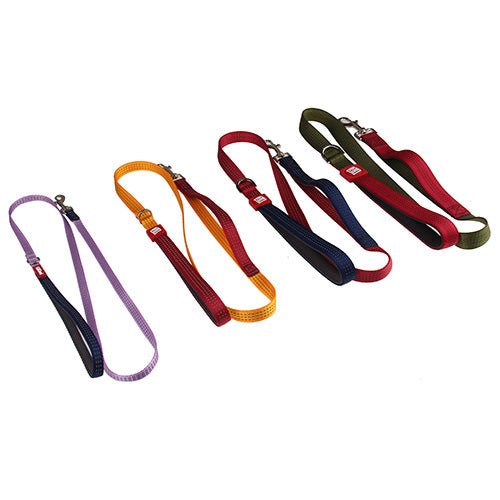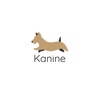Dog leashes are an essential tool for pet owners, providing safety, control, and convenience during walks and outings with your canine companion. Choosing the right leash can make a significant difference in your dog's comfort and your ability to manage them effectively. In this comprehensive guide, we'll explore everything you need to know about dog leashes, including different types, their uses, and tips on selecting the best leash for your dog's needs.
Table of Contents:
- Why Use a Dog Leash?
- Types of Dog Leashes
- Standard Leashes
- Retractable Leashes
- Adjustable Leashes
- Hands-Free Leashes
- Training Leashes
- Factors to Consider When Choosing a Dog Leash
- Size and Strength of Your Dog
- Length and Material of the Leash
- Safety Features
- Comfort and Grip
- Reflective Properties
- Tips for Using a Dog Leash Effectively
- Proper Leash Training
- Correct Handling Techniques
- Safety Precautions
- Best Practices for Maintaining Your Dog's Leash
- Cleaning and Storage
- Regular Inspections
- Conclusion
Why Use a Dog Leash?
Dog leashes serve multiple purposes and are often required by law in many areas. Here are some reasons why using a leash is important:
- Safety: A leash provides control over your dog, preventing them from running into dangerous situations like traffic or encountering aggressive animals.
- Training Aid: Leashes are valuable tools for obedience training, allowing you to guide and redirect your dog's behavior during walks.
- Legal Compliance: Many municipalities have leash laws to ensure public safety and prevent incidents involving unleashed dogs.
- Bonding: Walking on a leash can strengthen the bond between you and your dog by providing shared experiences and opportunities for communication.
Types of Dog Leashes
1. Standard Leashes
Standard leashes are the most common type, typically made from nylon or leather. They come in various lengths and widths to suit different dog breeds and activities. Standard leashes are versatile and suitable for everyday walks and training sessions.
2. Retractable Leashes
Retractable leashes feature a retractable cord or belt that can extend and retract, allowing dogs more freedom to explore while still maintaining some control. These leashes are convenient for outdoor activities but require proper handling to avoid accidents.
3. Adjustable Leashes
Adjustable leashes offer versatility by allowing you to change the length of the leash as needed. They often feature multiple D-rings or clips along the leash, enabling you to adjust the length for different situations, such as walking in crowded areas or giving your dog more room to roam.
4. Hands-Free Leashes
Hands-free leashes are designed to be worn around your waist or over your shoulder, allowing you to walk or jog with your dog without holding onto a traditional leash. These leashes are ideal for active pet owners and can provide a more natural walking experience.
5. Training Leashes
Training leashes are specially designed to assist in obedience training and behavior correction. They come in various styles, including long lines for recall training or double-handled leashes for better control during intensive training sessions.
Factors to Consider When Choosing a Dog Leash
Choosing the right leash involves considering several factors based on your dog's size, behavior, and your specific needs. Here's what to keep in mind:
Size and Strength of Your Dog
The size and strength of your dog are critical factors when selecting a leash. Larger, more powerful breeds may require thicker and more durable leashes to withstand their strength. Smaller dogs, on the other hand, may do well with lighter and narrower leashes that are easier to handle.
Length and Material of the Leash
Leash length can vary significantly, from short (4-6 feet) for better control to longer (15-30 feet) for more freedom during training or play. Consider the material of the leash as well—nylon is durable and easy to clean, while leather is strong and develops a natural patina over time.
Safety Features
Look for leashes with safety features such as reflective stitching or LED lights for increased visibility in low-light conditions. Some leashes also come with shock-absorbing bungee sections to reduce strain on both you and your dog during sudden movements.
Comfort and Grip
A comfortable grip is essential for preventing hand fatigue during long walks. Leashes with padded handles or ergonomic designs offer better grip and reduce strain on your hands and wrists.
Reflective Properties
If you often walk your dog at night or in low-light areas, choose a leash with reflective properties to enhance visibility and keep you both safe.
Tips for Using a Dog Leash Effectively
Using a dog leash effectively requires proper training and handling techniques. Here are some tips to make the most out of your leash:
Proper Leash Training
Introduce your dog to the leash gradually, using positive reinforcement techniques to associate it with pleasant experiences like treats and praise. Start indoors or in a quiet outdoor environment and gradually increase the duration and complexity of walks.
Correct Handling Techniques
Hold the leash securely but avoid excessive tension, allowing your dog some freedom to explore while maintaining control. Use verbal cues and gentle corrections to guide your dog's behavior without yanking or pulling on the leash.
Safety Precautions
Always supervise your dog while on a leash to prevent accidents or entanglements. Avoid wrapping the leash around your hand or fingers to prevent injuries in case your dog suddenly pulls or lunges.
Best Practices for Maintaining Your Dog's Leash
Taking care of your dog's leash ensures its longevity and reliability. Follow these best practices:
Cleaning and Storage
Regularly clean your dog's leash using mild soap and water to remove dirt and grime. Allow the leash to air dry completely before storing it in a clean, dry place away from direct sunlight or moisture.
Regular Inspections
Inspect the leash regularly for signs of wear and tear, such as fraying, weak spots, or damaged hardware. Replace the leash if it shows signs of deterioration to prevent accidents or breakage during walks.
Conclusion
Choosing the right dog leash is essential for your dog's safety, comfort, and overall well-being. Consider your dog's size, behavior, and your specific needs when selecting a leash type and features. Proper leash training and handling techniques can enhance your walking experience and strengthen the bond between you and your dog.
At Kanine India, we offer a variety of high-quality dog leashes designed to meet different needs and preferences. Explore our collection to find the perfect leash for your canine companion and enjoy safe, enjoyable walks together. Remember to prioritize safety, comfort, and durability when choosing a leash, and always supervise your dog during outdoor activities.


No comments yet